You bought a box of brown hair dye, followed the instructions, waited the full 30 minutes, rinsed it out-and now your hair looks grey. Not dark brown. Not ash brown. Grey. You panic. Did you buy the wrong shade? Did the dye go bad? Did your hair suddenly turn grey overnight? The truth is, your hair didn’t turn grey. It never could. But something else is happening-and it might be serious.
Box Dye Can’t Turn Your Hair Grey
Let’s start with the science: hair dye doesn’t remove pigment from your hair. Grey hair isn’t caused by chemicals-it’s caused by your hair follicles stopping production of melanin, the natural pigment that gives hair color. That’s a biological process tied to age, genetics, and sometimes stress. No box dye, no matter how strong or cheap, can trigger that. Brown dye adds color. It doesn’t strip it. If your hair looks grey after dyeing, you’re seeing something else.
What You’re Actually Seeing: Allergic Reaction
The most likely culprit? An allergic reaction to para-phenylenediamine, or PPD. It’s the main ingredient in most permanent brown and black box dyes. It’s what makes the color stick. But for about 1 in 20 people, it triggers a severe skin reaction. And when that happens, your hair doesn’t change color-your scalp and face do. And that changes how the light hits your hair.
Severe swelling around the eyes, forehead, or scalp can cast shadows. Red, flaky, inflamed skin reflects light differently. Blisters and welts create uneven surfaces. When your scalp is swollen and angry, the brown dye on your hair can look dull, ashy, or even grey under normal lighting. It’s not the hair. It’s the inflammation messing with your perception.
Signs It’s an Allergy, Not a Bad Dye Job
Here’s how to tell the difference:
- If your scalp is burning, stinging, or itching badly-especially if it’s worse than usual-it’s not a dye failure. It’s an allergy.
- If your eyelids are puffy, your face is swollen, or your neck is red and hot-you’re having an allergic reaction.
- If you feel lightheaded, dizzy, or have trouble breathing-stop everything. This is an emergency.
- If the grey look only shows up 24 to 72 hours after dyeing, and it’s patchy or uneven, it’s likely inflammation, not poor color application.
- If you’ve used the same brand before without issue but this time it’s different? You’ve become sensitized. PPD reactions often get worse with repeated use.
Real hair dye failure? Your hair turns orange, brassy, or too light. It’s uneven. It fades fast. But it doesn’t turn grey. And it doesn’t make your skin scream.
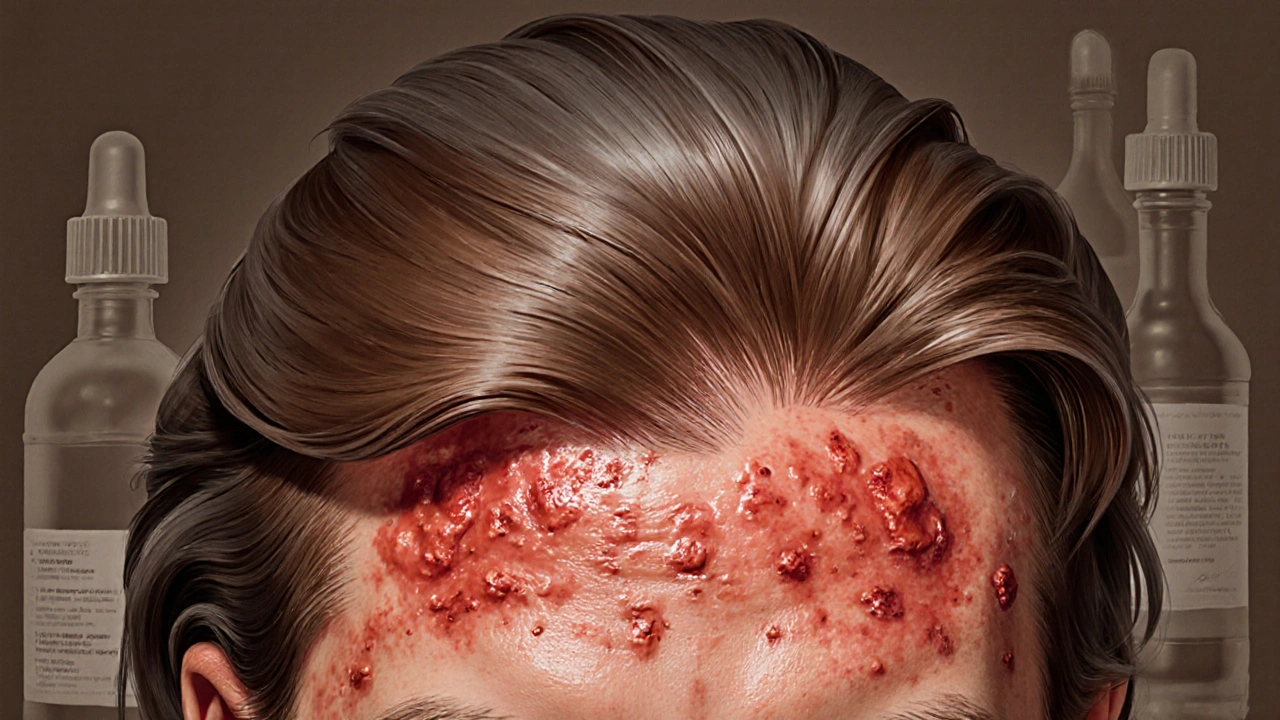
Why This Happens More Than You Think
PPD is in 60% of permanent hair dyes sold in the U.S. The North American Contact Dermatitis Group studied over 38,000 patients and found that 36% of hair dye allergies were linked to PPD. That’s not rare. That’s common. And it’s getting worse. As more people-men, women, older adults-start dyeing their hair at home, reactions are rising. The European Commission now limits PPD to 2% in hair dyes. The U.S. doesn’t have that cap. And most box dyes don’t list the exact percentage.
And here’s the kicker: you can test negative for PPD on a patch test one year, then react badly the next. Your immune system changes. Your skin gets more sensitive. That’s why so many people say, “I’ve used this brand for years-why now?”
What to Do Right Now
If your hair looks grey and your scalp feels like it’s on fire:
- Wash your hair and scalp immediately with a mild shampoo. Don’t wait. Rinse for at least 5 minutes. You want to remove every trace of dye.
- Apply a cold compress to swollen areas. Ice wrapped in a towel, 10 minutes at a time.
- Take an over-the-counter antihistamine like Benadryl. It won’t fix the reaction, but it can reduce swelling and itching.
- DO NOT reapply dye. Not tomorrow. Not next week. Not ever again without a patch test.
If you have swelling around your eyes, lips, or throat-or if you’re having trouble breathing-call 911 or go to the ER. This isn’t a cosmetic issue. It’s a medical emergency.
How to Avoid This Next Time
If you still want to color your hair, here’s how to do it safely:
- Always do a patch test 48 hours before dyeing. Apply a small amount behind your ear or on your inner elbow. Wait two days. If you get redness, itching, or swelling-don’t use it.
- Look for PPD-free dyes. Brands like Madison Reed, Naturtint, and Herbatint offer alternatives. But check the label: some use PTD (para-toluenediamine), which can cross-react with PPD. Not everyone is safe.
- Go to a salon. Professional colorists use higher-quality formulas and know how to mix tones to avoid brassy or ashy results. They also have access to gentler, non-permanent options.
- Try henna or plant-based dyes. They don’t contain PPD. But be warned: they don’t lighten hair. And they can stain skin. Test them first.
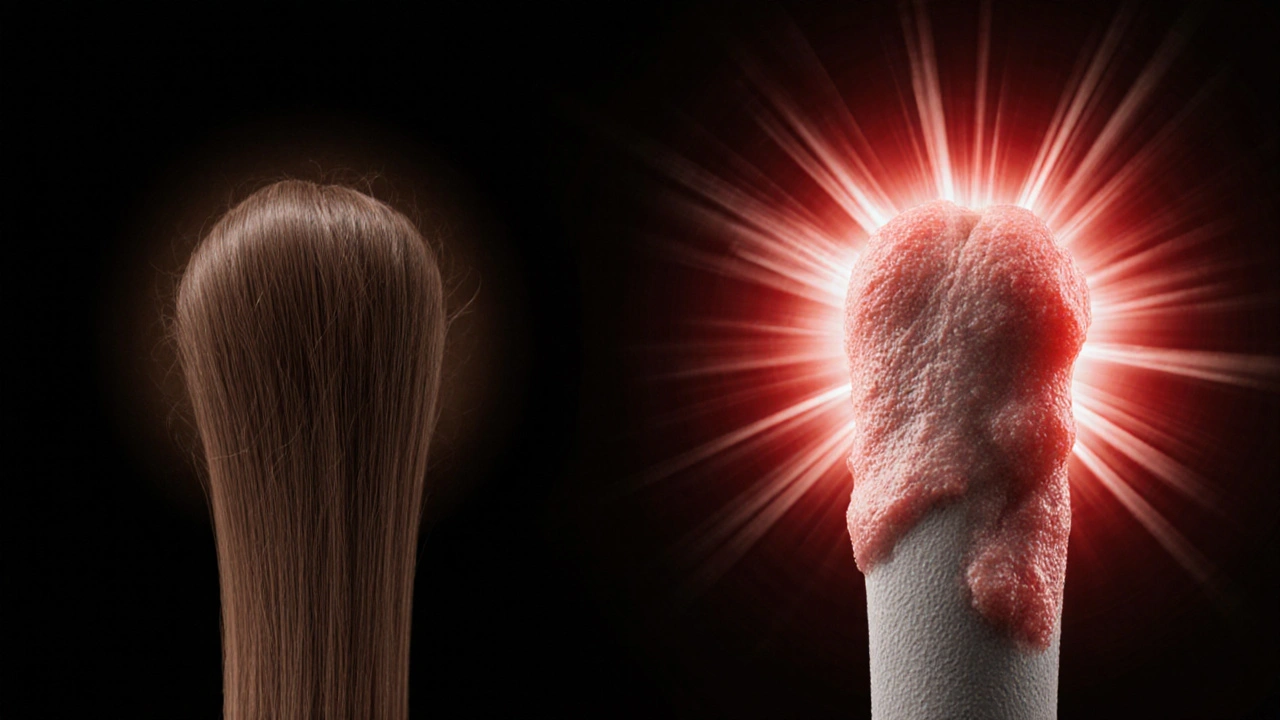
Why Your Hair Might Still Look Off After the Reaction Clears
Even after the swelling goes down, your hair might still look dull or uneven. Why? Because allergic reactions can damage hair. Inflammation weakens the hair shaft. You might lose strands. The cuticle gets rough. Light scatters differently. That’s not grey. That’s damaged. A good deep conditioner or a protein treatment can help. But if your hair is breaking or thinning, see a trichologist.
What You Should Know About the Dye Industry
Box dyes are cheap because they’re mass-produced. They’re designed for quick results, not safety. The ingredients aren’t always clearly labeled. Companies aren’t required to test every batch for consistency. And most people don’t realize that the “brown” on the box is a promise-not a guarantee. Lighting, hair porosity, previous color treatments, and even water hardness can change the outcome. But none of that turns hair grey.
What turns hair grey? Stress. Aging. Genetics. And yes-severe allergic reactions that make you think your hair changed color when it didn’t.
Final Thought: It’s Not Your Hair. It’s Your Body.
Your hair didn’t turn grey. Your body is screaming at you. And if you ignore it, next time it could be worse. This isn’t about choosing the right shade of brown. It’s about listening to your skin. If your scalp burns, your face swells, or your hair looks wrong after dyeing-don’t blame the product. Don’t try again. Get help. Your hair can grow back. Your health can’t.
Can brown hair dye actually turn my hair grey?
No. Hair dye adds color-it doesn’t remove pigment. Grey hair forms when your follicles stop producing melanin, which is a natural aging process. Box dyes cannot cause this. If your hair looks grey after dyeing, it’s due to an allergic reaction causing swelling, inflammation, or hair damage that changes how light reflects off your strands.
What ingredient in box dye causes grey-looking hair?
The main culprit is para-phenylenediamine (PPD), a chemical used in most permanent brown and black dyes. It’s not PPD turning your hair grey-it’s the allergic reaction it triggers. Swelling, redness, and blisters on your scalp and face can distort how the brown dye appears under light, making it look ashy or grey.
How do I know if my reaction is serious?
Signs of a serious reaction include swollen eyelids or lips, difficulty breathing, dizziness, or blisters on your scalp or face. If you experience any of these, stop using the product immediately and seek medical help. Even mild itching and burning that lasts more than 48 hours should be checked by a dermatologist.
Should I stop dyeing my hair forever?
Not necessarily. But you need to be smarter about it. Avoid all permanent dyes with PPD or PTD. Try PPD-free brands like Madison Reed, Naturtint, or henna. Always do a patch test 48 hours before dyeing. Consider professional color services-they use safer formulas and know how to avoid harsh reactions.
Can I still use box dye if I’ve had a reaction before?
No. Once you’ve had an allergic reaction to hair dye, your risk of a worse reaction increases with every use. Even if you didn’t react the first time, your body can become sensitized over time. Reapplying dye after a reaction is dangerous and could lead to anaphylaxis. Switch to safer alternatives or consult a dermatologist before trying anything else.
Why do some people say their hair turned grey after dyeing?
They’re describing the visual effect of swelling and inflammation, not actual color change. When the scalp swells, it casts shadows. Red, flaky skin reflects light differently. Blisters create uneven surfaces. All of this can make brown-dyed hair look dull, ashy, or grey-even though the dye itself hasn’t changed. Photos taken during reactions often show this distortion clearly.
Is there a safer alternative to box dye?
Yes. Look for PPD-free permanent dyes like Madison Reed, Naturtint, or Clairol Natural Instincts. Semi-permanent dyes, plant-based options like henna, or root touch-up powders are also safer. But always check the ingredient list-some “natural” dyes still contain PTD, which can cross-react with PPD. Patch testing is still required.

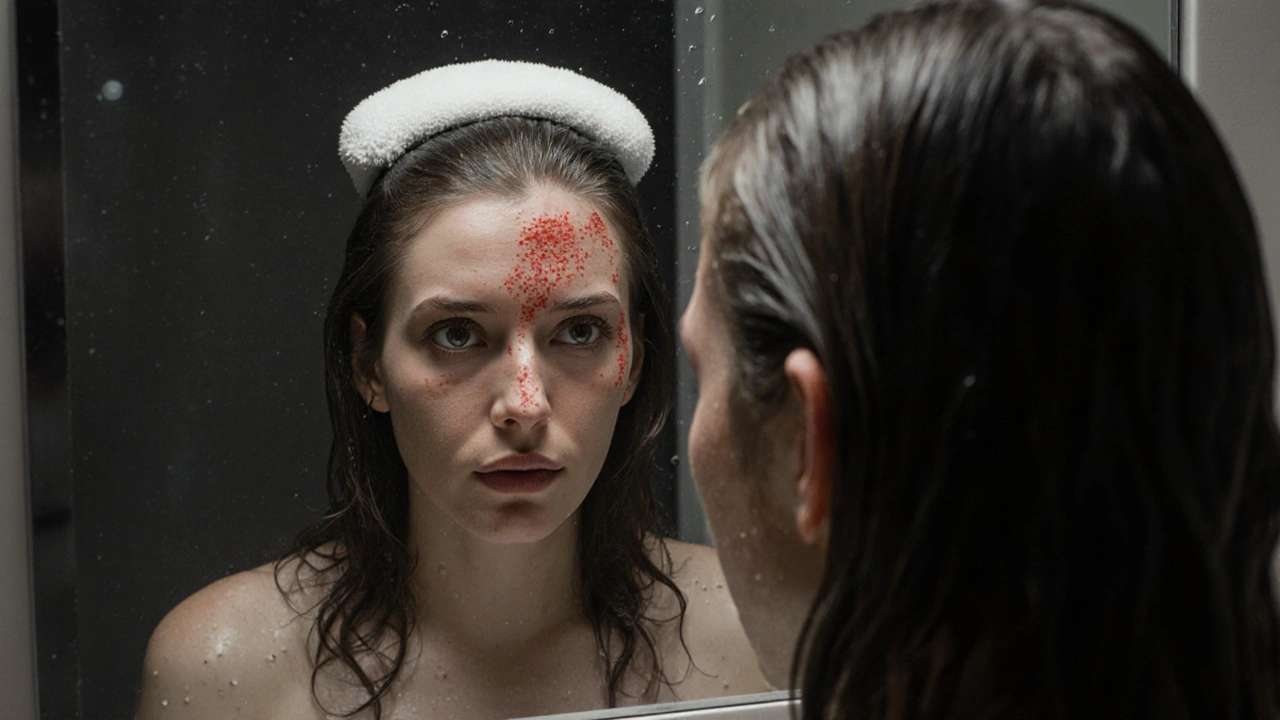
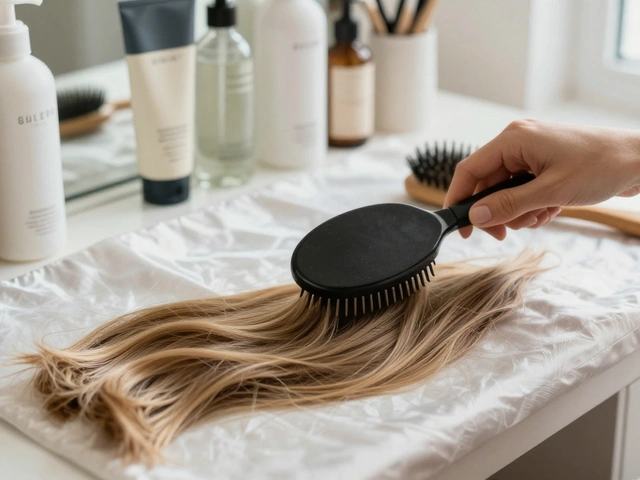

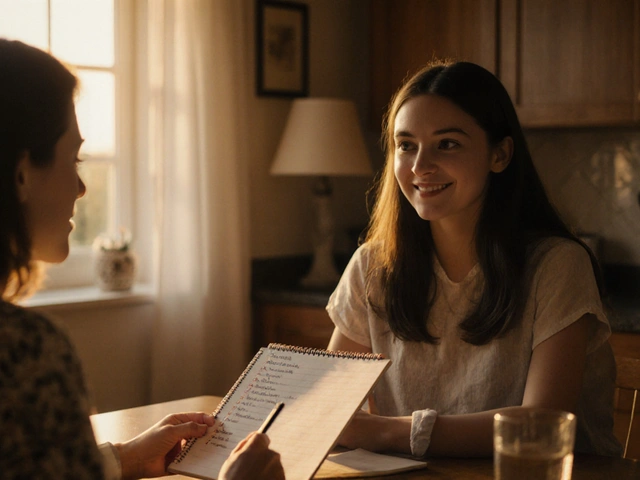
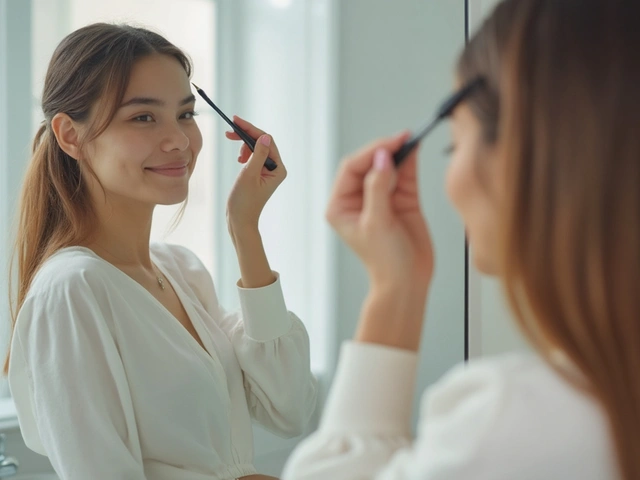

James Winter
November 8, 2025 AT 04:17This is bullshit. Box dye turns hair grey because it's weak shit. You're just bad at following instructions.
Aimee Quenneville
November 8, 2025 AT 04:55so... you're telling me my hair didn't turn grey... but my scalp looked like a tomato that got into a fight with a wasp nest? 🤔😂 i'm just here for the drama and the free benadryl recommendations.
Cynthia Lamont
November 9, 2025 AT 20:56OMG. I KNEW IT. I've been saying this for years. PPD is a chemical weapon disguised as hair dye. The FDA is asleep at the wheel. 60% of box dyes contain it? That's not a market-it's a public health disaster. People are dying from this and no one's talking about it. You think your hair looks bad? Try having your eyelids swell shut while your partner screams 'is this normal?!' No. It's not normal. It's corporate negligence wrapped in a box labeled 'natural brown.' I'm filing a complaint with the FTC today. Someone has to.
Kirk Doherty
November 11, 2025 AT 00:16Used this dye three times. Never had an issue. Maybe you're just sensitive. Or maybe you didn't leave it on long enough.
Dmitriy Fedoseff
November 11, 2025 AT 07:18There’s a deeper truth here: we’ve outsourced our care to convenience. We buy color like we buy fast food-cheap, fast, and without asking what’s inside. But the body remembers. It doesn’t care about marketing. It doesn’t care about your Instagram aesthetic. It only cares if you’re safe. This isn’t about hair. It’s about how we treat ourselves. If your scalp burns, you’re not failing the dye. You’re failing the system that told you it was okay.
Meghan O'Connor
November 13, 2025 AT 00:47First of all, 'grey-looking hair' is not a medical term. Second, the article misuses 'inflammation' as if it's a lighting effect. Third, the PPD stats are cherry-picked. And fourth-why is this even a post? You're just scaring people because you don't know how to use a brush.
Morgan ODonnell
November 13, 2025 AT 19:29I had this happen last year. Swollen eyes, burning scalp, hair looked like ash. Went to the ER. They said it was PPD. I haven't dyed my hair since. Now I just let it go grey. And honestly? It's the best decision I ever made. My scalp hasn't felt this calm in 15 years.
Liam Hesmondhalgh
November 13, 2025 AT 23:58PPD? More like P-Pain-Damn. I used that box dye and woke up looking like a ghost who lost a bet with a chemistry set. My wife thought I was dead. Took 3 days for the swelling to go down. Now I use henna. It’s messy. It smells like a curry shop. But at least I’m not in the hospital.
Patrick Tiernan
November 15, 2025 AT 17:42So you're telling me I wasted 40 bucks and 3 hours of my life because my scalp decided to throw a tantrum? I'm just here for the free therapy session
Patrick Bass
November 16, 2025 AT 16:17Don't forget to rinse thoroughly. Many people don't rinse long enough. Five minutes is the minimum. I've seen cases where people rinsed for two and wondered why it looked weird.
Tyler Springall
November 17, 2025 AT 17:15How dare you suggest that my hair color is a reflection of my self-care? This is an attack on my identity. I am not my hair. I am not my dye. I am a complex being navigating a capitalist hellscape where even my roots betray me. The real villain here is not PPD-it's the expectation that I must remain youthful. And now you're weaponizing dermatology to shame me?
Colby Havard
November 18, 2025 AT 21:21It is imperative to recognize that the propagation of misinformation regarding chemical reactions in hair dye is not merely an aesthetic concern, but a systemic failure of public health literacy. The conflation of visual perception with physiological change, as outlined in the original post, is both scientifically accurate and dangerously underpublicized. One must not underestimate the role of corporate lobbying in suppressing regulatory action on PPD, nor the cognitive dissonance experienced by consumers who have been conditioned to believe that convenience equates to safety. This is not a hair problem. It is a societal one.
Amy P
November 19, 2025 AT 00:35Wait-so if my hair looks grey but my scalp is red and puffy, it’s not the dye’s fault… it’s MY BODY screaming? I’ve been blaming the brand for 5 years. I just bought a new box yesterday. Should I throw it out? I’m crying. I need answers. And maybe a hug.